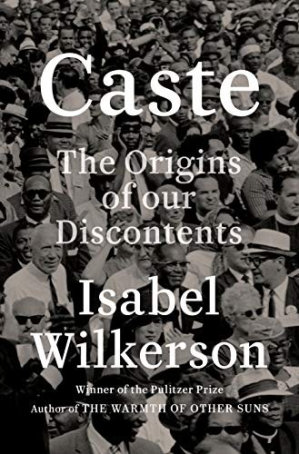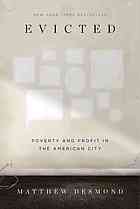The Three Migration Streams
Wilkerson traces three distinct migration patterns that collectively transformed America

Book summary
by Isabel Wilkerson
The Epic Story of America's Great Migration
The epic story of America's Great Migration of black citizens
Topics
Read this book as both a monumental historical work and deeply personal narrative. Use Readever to track the three migration streams and the individual journeys of Ida Mae, George, and Robert. After each section, reflect on how their experiences connect to broader historical forces and contemporary issues. Use the AI to explore connections between the Great Migration and current social dynamics, and to identify key themes about human dignity, systemic oppression, and resilience.
Things to know before reading
A monumental work of narrative nonfiction that chronicles the mass migration of six million African Americans from the rural South to urban centers in the North and West between World War I and the 1970s, told through the intimate stories of three individuals who made the journey.
The Great Migration wasn't just about geography—it was a profound quest for human dignity and self-determination that reshaped American society.
Wilkerson traces three distinct migration patterns that collectively transformed America
Freedom came at a steep price—families torn apart, cultural roots severed, and constant adaptation required
Jim Crow laws and systemic racism created the conditions that made migration necessary
Ready to continue? Launch the Readever reader and keep turning pages without paying a cent.

Isabel Wilkerson
Wilkerson's follow-up work examining America's racial hierarchy as a caste system

Michelle Alexander
Examines how mass incarceration functions as a modern racial caste system

Ta-Nehisi Coates
A powerful meditation on race in America framed as a letter to the author's son
Discover how the largest internal migration in American history transformed the nation's social, cultural, and political landscape. Through deeply personal narratives and meticulous research, Pulitzer Prize-winning author Isabel Wilkerson brings to life the courage, resilience, and determination of millions who sought freedom and opportunity against overwhelming odds.
Key idea 1
Wilkerson traces three distinct migration patterns that collectively transformed America
The book follows three main migration streams: from the Southeast to the Northeast (Ida Mae's journey), from the Deep South to the Midwest (George's path), and from the Southwest to the West Coast (Robert's route). Each stream represented different motivations and destinations, yet all shared the common goal of escaping oppression.
Remember
Key idea 2
Freedom came at a steep price—families torn apart, cultural roots severed, and constant adaptation required
Migrants faced profound losses: leaving behind family, familiar landscapes, and cultural traditions. They encountered new forms of discrimination in the North while navigating the complex emotions of displacement and the constant pressure to prove their worth in unfamiliar environments.
Remember
Key idea 3
Jim Crow laws and systemic racism created the conditions that made migration necessary
The book meticulously documents how legal segregation, economic exploitation, and racial violence in the South created an environment where migration became the only viable path to safety and opportunity. The migrants weren't just seeking better jobs—they were fleeing a system designed to keep them subjugated.
Remember
"The Warmth of Other Suns" is a masterful work of narrative history that tells the story of the Great Migration—the movement of six million African Americans from the rural South to urban centers in the North and West between 1915 and 1970. Through the deeply personal stories of three individuals—Ida Mae Gladney, George Starling, and Robert Foster—Pulitzer Prize-winning journalist Isabel Wilkerson brings this monumental demographic shift to life.
The book combines sweeping historical analysis with intimate personal narratives, showing how this mass movement transformed American society, culture, and politics. It explores the complex motivations behind migration, the profound challenges faced by those who made the journey, and the lasting impact on both the communities they left and those they joined.
Open Readever's reader to highlight passages, ask the AI companion questions, and keep exploring without paying a cent.
"The Warmth of Other Suns" stands as a landmark achievement in American historical writing. Wilkerson's 15 years of research and over 1,200 interviews result in a work that is both academically rigorous and emotionally compelling. The book has been widely praised for its narrative power, meticulous research, and profound insights into one of the most significant yet underappreciated events in American history.
Critics have called it "a brilliant and stirring epic" (The New York Times), "a landmark piece of nonfiction" (The Washington Post), and "a masterpiece of narrative nonfiction" (The Boston Globe). The book won the National Book Critics Circle Award and was named one of the New York Times' 10 Best Books of the Year.
History enthusiasts interested in American social movements
Readers seeking to understand the roots of contemporary racial dynamics
Anyone interested in migration studies and diaspora narratives
Educators looking for compelling historical narratives for classroom use
Readers who appreciate deeply researched narrative nonfiction
Isabel Wilkerson is a Pulitzer Prize-winning journalist and author who has dedicated her career to telling the stories of marginalized communities. As the first African American woman to win the Pulitzer Prize in journalism, she brings both professional excellence and personal insight to her work.
Before writing "The Warmth of Other Suns," Wilkerson spent 15 years researching the Great Migration, conducting over 1,200 interviews and examining countless historical documents. Her meticulous approach and narrative skill have established her as one of America's most important historical writers. She later authored "Caste: The Origins of Our Discontents," further cementing her reputation as a leading voice on American social history.

Matthew Desmond
A groundbreaking study of poverty and housing instability in America

Isabel Wilkerson
Wilkerson's follow-up work examining America's racial hierarchy as a caste system

Ta-Nehisi Coates
A powerful meditation on race in America framed as a letter to the author's son
Build your personalized reading stack
Pulitzer Prize-winning author's definitive account of the Great Migration
Based on 15 years of research and over 1,200 interviews
National Book Critics Circle Award winner
New York Times 10 Best Books of the Year
Essential reading for understanding modern American society
Sign in to Readever to keep reading with AI guidance, instant summaries, and synced notes.
"The Warmth of Other Suns" is more than just a history book—it's a profound meditation on the human quest for freedom and dignity. Through the unforgettable stories of Ida Mae, George, and Robert, Wilkerson shows how ordinary people made extraordinary choices that collectively transformed a nation. The book reminds us that migration is not just about geography, but about the fundamental human desire for self-determination and the courage required to pursue it against overwhelming odds.
The Great Migration (1915-1970) represents the largest internal movement of people in American history, involving approximately six million African Americans who relocated from the rural South to urban centers in the North and West. This demographic shift fundamentally reshaped American society, politics, and culture in ways that continue to reverberate today.
Wilkerson's groundbreaking work reveals how this migration was not merely a search for economic opportunity, but a quest for basic human dignity and freedom from the systematic oppression of Jim Crow segregation. The migrants were essentially refugees in their own country, seeking asylum from racial violence, legal discrimination, and economic exploitation.
A sharecropper from Mississippi who migrated to Chicago, representing the Southeast-to-Northeast migration stream. Her story illustrates the courage required to leave everything familiar behind and the resilience needed to build a new life in the industrial North.
A fruit picker from Florida who moved to New York City, representing the South-to-Northeast stream. His journey demonstrates how even with education and ambition, the South offered limited opportunities for advancement and dignity.
A physician from Louisiana who relocated to Los Angeles, representing the Southwest-to-West Coast migration stream. His experience highlights how even highly educated professionals faced systemic barriers that made the North essential for professional fulfillment.
The migration created a new urban Black working class that fueled Northern industrial growth while simultaneously draining the South of valuable labor. This economic shift had lasting implications for both regions' development.
The concentration of African Americans in Northern cities led to unprecedented cultural flourishing, including the Harlem Renaissance, Chicago blues, and countless artistic movements that transformed American culture.
The migration fundamentally altered American politics, creating new voting blocs that would eventually support the Civil Rights Movement and shift party alignments for decades to come.
The movement challenged and changed racial dynamics across America, creating new forms of integration and conflict that continue to shape urban life.
Understanding the Great Migration is essential for comprehending modern American society, including:
This extended outline captures the profound significance of Wilkerson's work and its relevance to understanding American history and contemporary society.

Tiago Forte
Proven method to organize digital life and unlock creative potential

Aristotle
Systematic exploration of virtue, happiness, and human flourishing

Mark Manson
Counterintuitive approach to living good life by choices
Start reading The Warmth of Other Suns for free and unlock personalized book journeys with Readever.